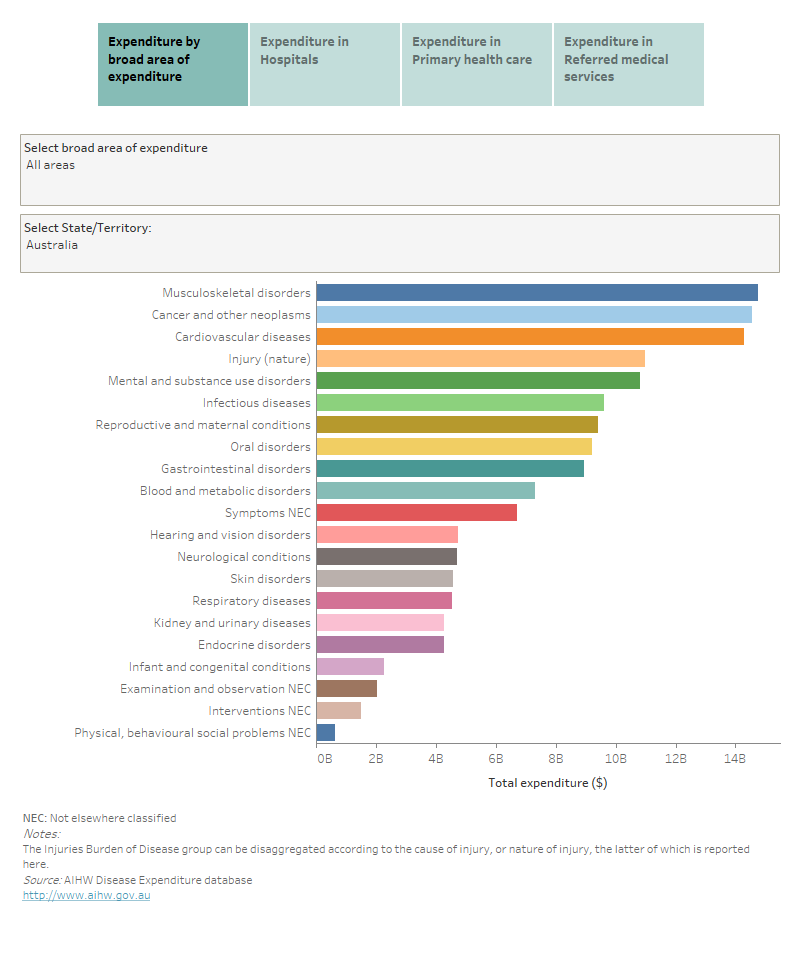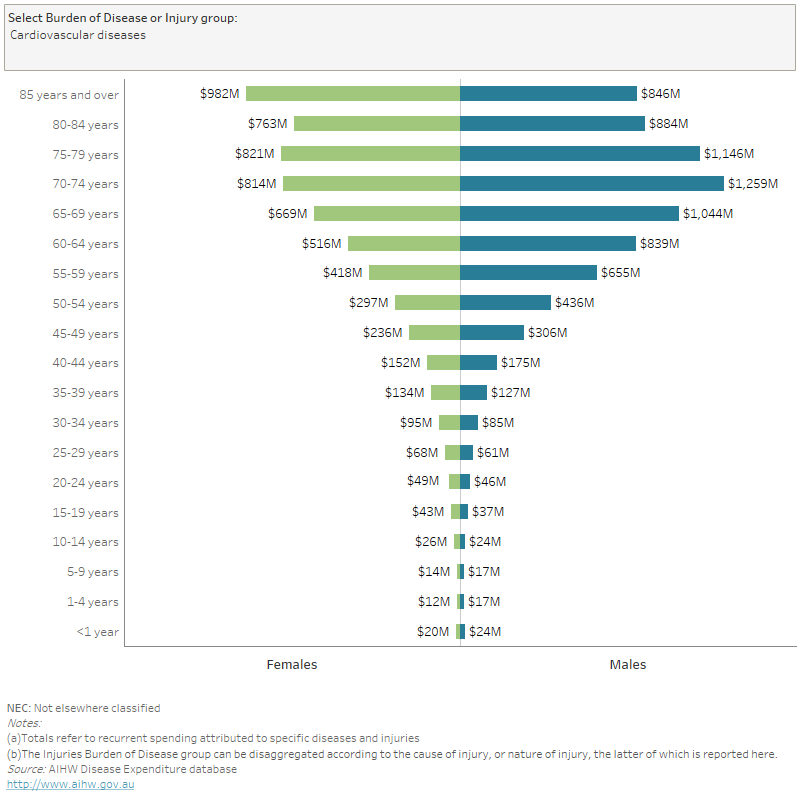Australian Burden of Disease groups
The Australian Burden of Disease Study (ABDS) condition list contains over 200 conditions in 17 groups. In this disease hierarchy, each disease is allocated to a disease group. The burden of disease groups contains related diseases or conditions – such as cardiovascular diseases, gastrointestinal disorders, or injuries – and one alternative reporting disease group (nature of injury instead of injury by external cause). These groups are listed in the figures below.
Not all health spending is directly related to a burden of disease condition or group. Some expenditure relates to interactions for purposes such as health maintenance (such as yearly health or dental checks) or investigation of potential health problems, which remain undiagnosed. These services are reported as signs and symptoms, interventions, examination and observation, and physical, behavioural social problems not elsewhere classified.
- The condition groups with the highest spending were Musculoskeletal disorders followed by Cancer and other neoplasms, and Cardiovascular diseases.
- The disease groups with the highest spending for admitted patients in public hospitals were Cardiovascular diseases, Injury and Gastrointestinal disorders. In private hospitals, these were Musculoskeletal disorders, Cardiovascular diseases and Cancer and other neoplasms.
- Spending on general practitioner services was highest for Infectious diseases, Mental and substance use disorders, followed by Musculoskeletal disorders and Cardiovascular diseases.
- Almost half of spending for allied health and other health practitioners related to Mental and substance use disorders, with a quarter relating to Hearing and vision disorders.
- The condition with the highest spending in the Infectious disease group was COVID–19, accounting for close to one-third of the spending within the group. It was followed by Other infections and Lower respiratory infections, together representing over half of the expenses in the Infectious Disease Group.
The following interactive data visualisation (Figure 5) can be used to display health spending for each disease group by area of expenditure, for each state and territory and Australia as a whole. Data used to create the visualisation is available to download from the data tables.
Figure 5: Expenditure by Burden of Disease groups, 2020–21
This interactive bar chart with disease expenditure by area of expenditure for each state and territory and Australia.

The proportion of total spending related to condition groups varies substantially according to age group, sex, and area of expenditure.
- Within the Infectious diseases group, spending was highest within the 1–4 and 85+ age groups.
- While spending on Mental and substance use disorders peaked in the 35–39 age group with similar spending for males and females, spending was high for all age groups between 15 and 54.
- Spending on chronic conditions such as Cancer and other neoplasms and Cardiovascular diseases was highest for age groups from around age 55 onwards for males and females.
The following interactive data visualisation (Figure 6) can be used to display spending on disease groups by sex, age group, for each area of expenditure. Data can be displayed as total expenditure or as a proportion of total expenditure. Data used to create the visualisation is available to download from the data tables.
Figure 6: Disease expenditure by detailed area of expenditure, sex, age group and disease or injury group, 2020–21
This interactive stacked vertical bar chart with spending by disease group, area and sex. Highest spending for injuries in emergency departments.

The following interactive data visualisation (Figure 7) can be used to display spending on disease groups in 2020–21 by sex and age group. Data used to create the visualisation is available to download from the data tables.
Figure 7: Expenditure on Burden of Disease or Injury group by sex and age group, 2020–21
This butterfly chart shows expenditure for both males and females generally increases with age.



